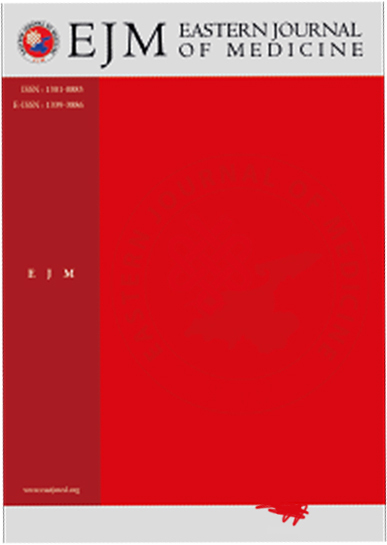Prenatal findings of patients diagnosed with Down syndrome: The value of ultrasound and biochemical screening
Halis Özdemir1, Hakan Kalaycı1, Nihal Şahin Uysal2, Huriye Ayşe Parlakgümüş1, Tayfun Çok1, Ebru Tarım1, Filiz Bilgin Yanık212
The aim of this study was to determine the association among ultrasound findings, biochemical markers, and Down syndrome A retrospective analysis was conducted of the files and electronic records of 70 Down syndrome patients who were diagnosed in the prenatal or postnatal periods between July 2006 and May 2013. Forty-nine of the 70 Down syndrome patients had prenatal ultrasound findings (70%). Thirty-five patients had 1st trimester nuchal translucency (NT) measurements, 17 of whom had elevated values, above the 95th percentile of the gestational week. Twenty-nine patients had first-trimester biochemical markers; the median PAPP-A was 0.53 MoM (±0.27) and the median fB-HCG was 1.87 MoM (±1.55). Twenty-six patients had second-trimester biochemical markers; the median AFP was 0.67 MoM (±0.27), the median uE3 was 0.79 MoM (±0.33), and the median HCG was 2.09 MoM (±1.33). Two or more minor anomalies were found in 45% of the patients, and 20% had at least one major anomaly. In this retrospective analysis, prenatal ultrasonographic examination detected minor or major anomalies in 70% of the patients. Eighteen patients had normal NT values, ten patients showed increased biochemical risk in the combined test, and 12 patients had ultrasonographic anomalies in the second trimester. In expert hands, mid-trimester ultrasound markers are highly sensitive for Down syndrome detection.
Keywords: Screening, soft markers, Down syndrome, genetic sonogram
Manuscript Language: English














